Why is it important to have a Vacuum Sealer in your kitchen?
Step Right Up!
In today’s fast-paced world, finding ways to extend the shelf life of our groceries while preserving their freshness and flavor is more important than ever. Enter the vacuum sealer, a kitchen gadget that has revolutionized food storage and meal preparation.
Whether you’re a busy parent trying to keep leftovers fresh, a home cook looking to store bulk purchases, or a meal prep enthusiast, a vacuum sealer can be a game-changer in your kitchen.
Vacuum sealers remove air from specially designed bags or containers, creating an airtight seal that helps prevent spoilage and freezer burn. This not only extends the shelf life of your food but also locks in nutrients and flavors, ensuring that your meals taste as good as the day they were sealed. The versatility of vacuum sealers, from sealing fresh produce and meats to storing coffee beans and even sous vide cooking, is truly inspiring.
This post will explore the different types of vacuum sealers available, their benefits, and tips for choosing the right one for your needs. I’ll also share some practical uses and creative ideas to help you make the most of this indispensable kitchen tool. Whether you’re new to vacuum sealing or looking to upgrade your current model, this guide covers you.
How does a vacuum sealer work?
Vacuum sealers operate on a simple yet effective principle: they remove air from a bag or container and then create an airtight seal to prevent air from re-entering. This process helps to preserve the freshness and extend the shelf life of food by minimizing exposure to oxygen, which can cause spoilage and degradation. Here’s a step-by-step look at how they work:
- Preparation: Place the food item you want to store into a vacuum sealer bag. These bags are designed to withstand vacuuming and create a strong seal.
- Positioning: Insert the open end of the bag into the vacuum sealer machine. Most vacuum sealers have a designated area or slot where the bag should be placed.
- Vacuuming: Close the lid of the machine and start the vacuuming process. The machine will remove the air from the bag using a built-in vacuum pump. This step is crucial as it reduces the presence of oxygen, which is responsible for bacterial growth and food spoilage.
- Sealing: Once the air has been removed, the machine uses heat to seal the open end of the bag. This heat seal creates an airtight barrier that prevents air from returning to the bag.
- Storage: After sealing, the vacuum-sealed bag can be stored in the refrigerator, freezer, or pantry, depending on the type of food and your storage needs.
Some vacuum sealers also come with additional features, such as adjustable settings for different types of food, pulse functions for delicate items, and attachments for sealing jars and containers. This versatility makes vacuum sealers a valuable tool in any kitchen.
What Can They Do For You
Vacuum sealers are incredibly versatile and offer a wide range of uses in the kitchen, from food preservation to enhancing cooking techniques. Here are some of the most common uses, including sous vide cooking:
1. Food Preservation
- Extend Shelf Life: Vacuum sealing significantly extends the shelf life of perishable foods like meat, cheese, vegetables, and fruits by reducing exposure to oxygen.
- Prevent Freezer Burn: Vacuum sealers prevent freezer burn on meats, fish, and other items stored in the freezer for long periods by removing air.
- Maintain Freshness: Vacuum sealing keeps dry goods like nuts, coffee, and spices fresher for longer by protecting them from moisture and air.
2. Sous Vide Cooking
- Precision Cooking: Vacuum sealing is essential for sous vide cooking, a technique in which food is cooked in a water bath at precise temperatures. Sealing the food in airtight bags ensures even cooking and prevents water from coming into contact with it.
- Flavor Infusion: Sous vide allows for intense flavor infusion as the food cooks in its own juices and any added marinades or seasonings.
3. Meal Preparation and Portion Control
- Batch Cooking: Prepare and vacuum seal meals in advance for quick and convenient weeknight dinners. This is perfect for busy families or individuals who need meal prep.
- Portion Control: Vacuum seals individual food portions for controlled serving sizes, which can help with diet or nutrition management.
4. Marinating
- Quick Marinating: Vacuum sealing can speed up the marinating process. The vacuum environment forces the marinade into the food, reducing the time needed to achieve rich flavors.
5. Storage Optimization
- Space Saving: Vacuum-sealed bags take up less space compared to bulky containers, making it easier to organize your refrigerator, freezer, or pantry.
- Non-Food Items: Vacuum sealers can also protect non-food items, such as important documents, emergency supplies, and even clothing, from moisture and dust.
6. Preventing Spoilage and Waste
- Avoid Waste: Vacuum sealing helps reduce food waste by keeping food fresh for longer, which is both economical and environmentally friendly.
- Seasonal Storage: Vacuum seal seasonal produce to enjoy throughout the year. For example, berries can be vacuum-sealed and frozen when they are in season and enjoyed months later.
7. Travel and Camping
- Compact Packing: Vacuum seal meals, snacks, and other essentials for camping trips or travel. This saves space and keeps food fresh and protected from the elements.
These diverse applications make vacuum sealers an invaluable tool for everyday cooking and special culinary techniques. Whether you’re looking to preserve food, cook sous vide, or organize your kitchen, a vacuum sealer offers convenience and efficiency.
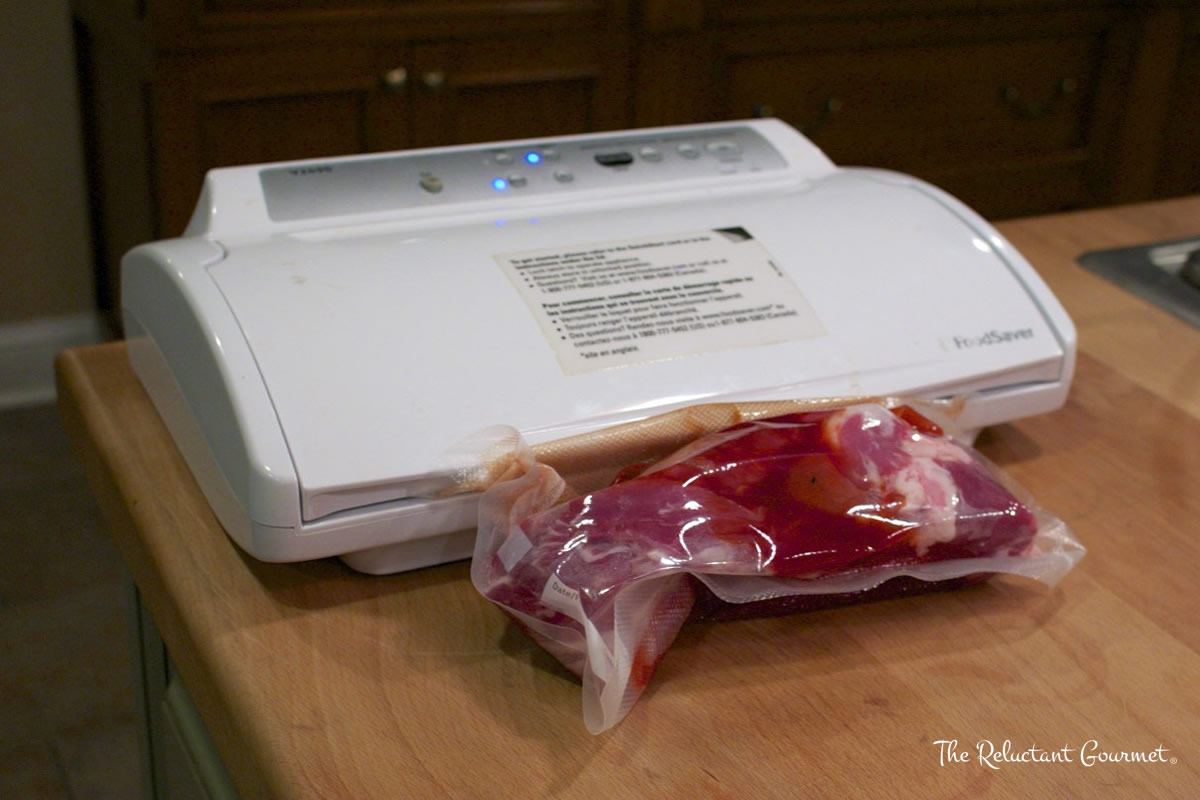
How Can They Save You Money?
Vacuum sealers can save money by reducing food waste, allowing for bulk purchases, and preserving non-food items. Here’s how:
1. Reducing Food Waste
- Extended Shelf Life: Vacuum sealing significantly extends the shelf life of perishable foods by preventing spoilage. This means you can buy larger quantities of fresh produce, meats, and dairy products without worrying about them going bad before you can use them.
- Freezer Burn Prevention: Vacuum sealing prevents freezer burn on meats, vegetables, and other frozen foods by eliminating air and preserving their quality and taste. This reduces the likelihood of having to throw away spoiled or degraded food.
- Leftover Storage: Vacuum seal leftovers to preserve them, make them last longer and reduce the need to throw out uneaten food.
2. Bulk Purchasing
- Buying in Bulk: Purchasing food in bulk is often cheaper than buying smaller quantities. Vacuum sealing allows you to buy large quantities of food, then portion and seal it for long-term storage, ensuring it stays fresh until you’re ready to use it.
- Seasonal Savings: Take advantage of seasonal sales and discounts by buying large amounts of produce or meat when prices are low, and vacuum seal them for future use.
3. Meal Preparation
- Meal Prepping: Prepare and vacuum seal meals or ingredients in advance, reducing the need for last-minute grocery runs or ordering takeout. This saves money by encouraging home-cooked meals over more expensive dining options.
- Portion Control: Vacuum sealing individual portions helps manage portion sizes, reducing the risk of overeating and food waste. This is particularly useful for families or individuals following specific dietary plans.
4. Preservation of Non-Food Items
- Protecting Valuables: Vacuum sealing can protect important documents, jewelry, and other valuables from moisture, dust, and damage, saving money on replacements or repairs.
- Storing Seasonal Items: Vacuum seal seasonal clothing, bedding, and other items to keep them in good condition, reducing wear and tear and extending their usable life.
5. Gardening and Seed Storage
- Seed Preservation: Vacuum sealing seeds keeps them viable longer, reducing the need to buy new seeds every planting season.
- Storing Harvest: Preserve excess garden produce by vacuum sealing it, allowing you to enjoy your harvest throughout the year without spoilage.
6. Home Organization
- Efficient Storage: Vacuum sealing reduces the volume of stored items, freeing up space in your home. This can save money on storage solutions or additional storage space.
- Organizing Small Items: Keeping small items like screws, batteries, and craft supplies organized and protected reduces the likelihood of losing or damaging them, saving money on replacements.
7. Emergency Preparedness
- Disaster Kits: Vacuum seal supplies to create long-lasting emergency kits, ensuring they remain in good condition and ready for use when needed. This can potentially save money on replacing expired or damaged items.
8. Pet Care
- Storing Pet Food: Buying pet food in bulk and vacuum sealing it can save money by keeping it fresh and preventing spoilage.
- Organizing Pet Supplies: Vacuum seal pet grooming tools, medications, and other supplies to keep them organized and in good condition, reducing the need for replacements.
9. Travel and Packing
- Efficient Packing: Vacuum seal clothing and other travel items to save space in luggage, potentially avoiding extra baggage fees on flights.
- Protecting Items: Vacuum sealing items for travel protects them from damage, reducing the need to replace damaged goods.
By leveraging the versatility and efficiency of vacuum sealers, you can make smart purchasing decisions, reduce waste, and protect your belongings, all of which contribute to significant cost savings over time.
Marinating Foods
Another great use for a vacuum is in marinating. As the vacuum sealer removes the air from the bag, it also opens the pores of the food, allowing marinades to penetrate deeply in as little at 20 minutes.
No more marinating for hours. I just put pre-portioned meat and/or vegetables in a vacuum sealer bag along with my marinade, vacuum seal, and I’m ready to grill in under half an hour.
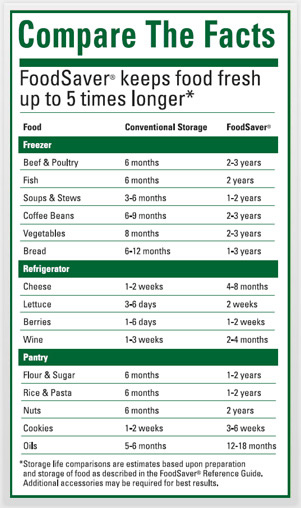
Sous Vide Cooking
Perhaps one of the most intriguing uses for vacuum sealers is in “sous vide” cooking, French for “under vacuum.”
Many world-class chefs, including Thomas Keller and Charlie Trotter, use the sous vide cooking method to yield moist and flavorful dishes with no loss of nutrients or flavors – remember, vacuum sealing seals in moisture and flavor.
The procedure is relatively straightforward: Place the food to be cooked into a vacuum bag and seal it. Submerge in water at the temperature you want your finished dish to be. For example, if you cook a chicken breast, keep the water at 165 degrees F. For fish, keep the water at 140 degrees F.
Check out my posts about sous vide: Sous Vide Posts & Articles
Here are some other great uses for the FoodSaver vacuum sealer that have nothing to do with food.
Vacuum sealers are incredibly versatile and can be used for various applications beyond the kitchen. Here are some creative and practical uses for vacuum sealers outside of food storage and preservation:
1. Travel and Packing
- Space-Saving Packing: Vacuum seal clothing, towels, and bedding to save space in luggage. This is especially useful for long trips or when storage space is limited.
- Protect Against Moisture: Vacuum sealing important documents, electronics, and other sensitive items keeps them dry, which is especially useful for outdoor adventures or travel to humid climates.
2. Emergency Preparedness
- Disaster Kits: Create compact, airtight emergency kits with essentials like first aid supplies, batteries, matches, and non-perishable food items.
- Waterproof Storage: Protect items that need to stay dry, such as matches, maps, and clothing, in case of floods or other emergencies.
3. Home Organization
- Document Preservation: Preserve important documents such as birth certificates, passports, and deeds by vacuum sealing them to protect them from moisture, dust, and deterioration.
- Organizing Small Items: Store and organize small items like jewelry, craft supplies, and hardware to prevent loss and keep them in good condition.
4. Outdoor Activities
- Camping and Hiking: Pack food, clothes, and gear in vacuum-sealed bags to reduce bulk and protect from the elements. Vacuum sealing can also help keep items like matches and first aid supplies dry and safe.
- Fishing and Hunting: For convenience and protection, preserve bait, store freshly caught fish, or pack hunting gear in vacuum-sealed bags.
5. Pet Care
- Pet Food Storage: Vacuum-sealed pet food keeps it fresh and free from pests. This is particularly useful for bulk purchases.
- Organize Pet Supplies: Store and protect pet grooming tools, toys, and medications.
6. Garden and Seed Storage
- Seed Preservation: Vacuum seal seeds to keep them dry and extend their viability for future planting seasons.
- Storing Harvest: To maintain quality, preserve dried herbs, flowers, and other garden produce.
7. Medical Supplies
- Sterile Storage: Keep bandages, gauze, and other medical supplies sterile and protected from contamination.
- Medication Organization: Vacuum seal medications to keep them organized and extend their shelf life.
8. Collectibles and Antiques
- Protect Valuables: Vacuum seal collectibles, stamps, coins, and antiques to protect them from dust, moisture, and damage.
- Preserve Photographs: Safeguard old photographs and memorabilia from fading and deterioration by vacuum sealing them.
9. Tools and Hardware
- Prevent Rust and Corrosion: Vacuum seal tools and hardware to protect them from rust and corrosion caused by moisture and air exposure.
- Organize Small Parts: Keep screws, nails, and other small hardware items organized and easily accessible.
10. Electronics and Gadgets
- Safe Storage: Protect electronics, cables, and accessories from dust, moisture, and damage during storage or travel.
11. Hobby and Craft Supplies
- Keep Materials Fresh: Vacuum seal materials such as fabric, yarn, and paper to keep them fresh and protected from damage.
- Organize Projects: Store and organize components of ongoing craft projects to keep everything together and easily accessible.
These diverse applications demonstrate the versatility of vacuum sealers, making them a useful tool in the kitchen and various aspects of daily life.

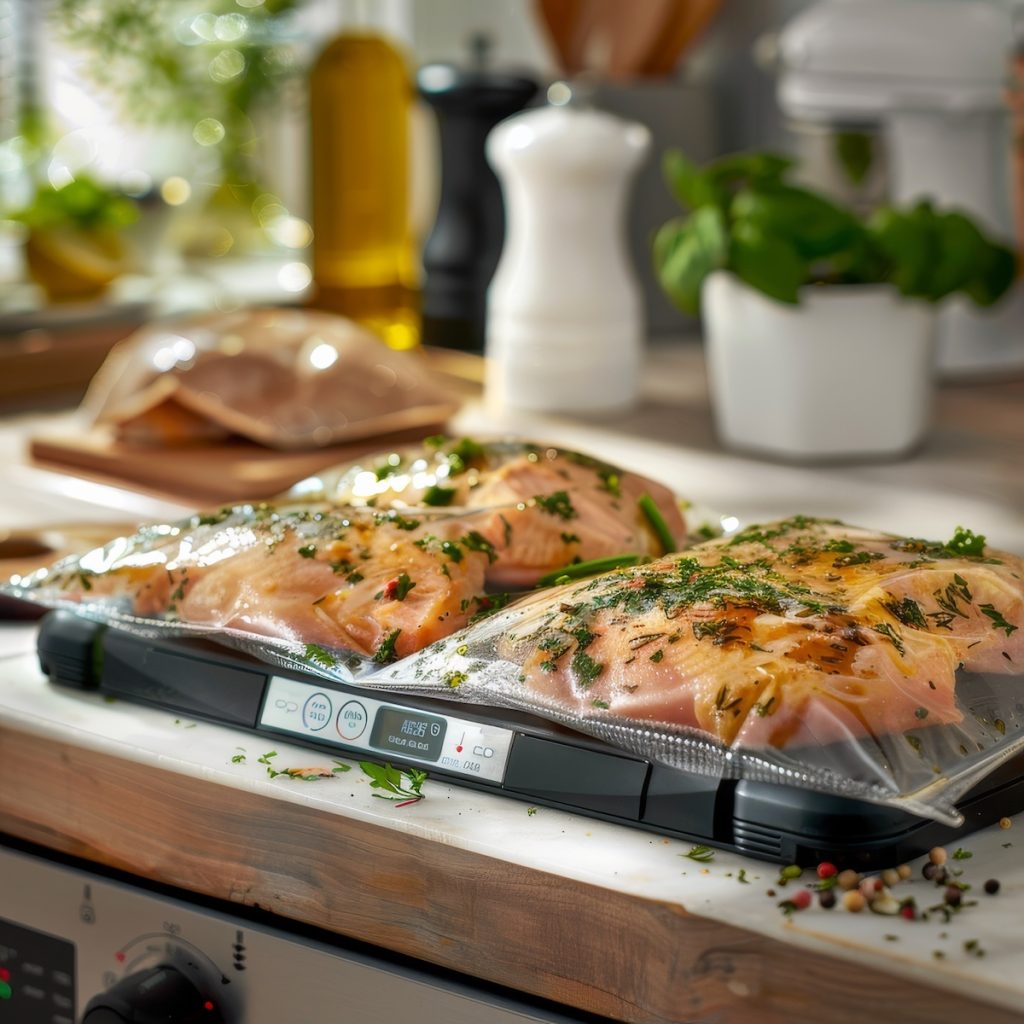




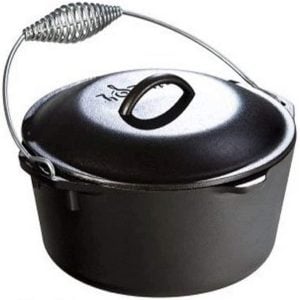
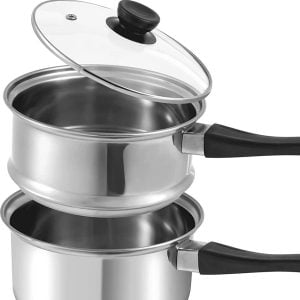
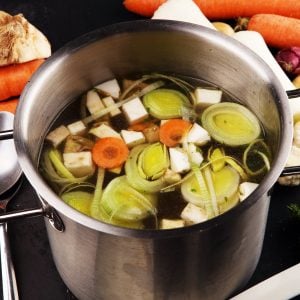
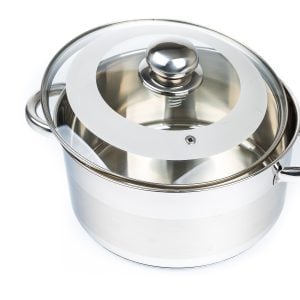
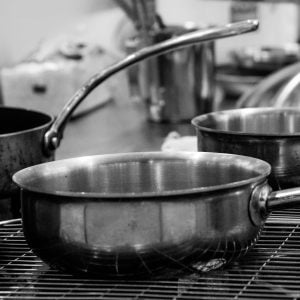
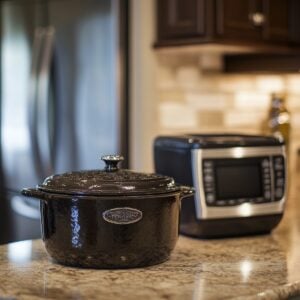

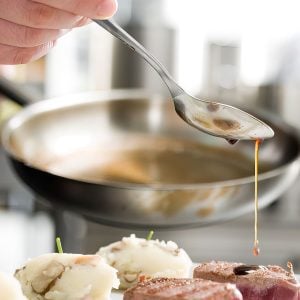


5 Responses
I use vacuum sealer to store my harvest. It’s a great investment, indeed.
I love my Foodsaver Vacuum Sealer. I use both the bags (mostly for freezer storage) and the mason jar attachments. Did you know they now have..I think it is 1/2 or 1 gallon mason jars. I put my excess flour (after it has spend time in the refrigerator) and sugar in them.
I have been thinking about purchasing a food saver and finally broke down and bought it. Have used it a couple of times and it is very easy to use. I do, however, like using the bags vs the rolls. Really got tired of tossing out food due to spoilage/freezer burn.
I realize that this post is from 2012 – there are now several home options for sous vide cooking that cost as little as $100. The cooking temperatures are LESS than what you want the “finished temperature to be” because the meat is kept at a constant temperature over longer periods of time (from 1 0 24 hours). Bacteria are killed at lower temperatures over time, so the meat is both safe to eat and much more tender than something cooked at a higher temperature over shorter periods of time. I love my sous vide cooker (a “stick” that clips onto my stockpot and keeps the water the temperature I set it), and my vacuum saver is a very important step. I put the meat in with marinade or seasonings, seal it up, put it in the pre-heated water, and leave it on the counter and go do other things. 🙂 Check it out. The Food Lab has great information on their website on sous vide cooking.
Vacuum sealer is really important.